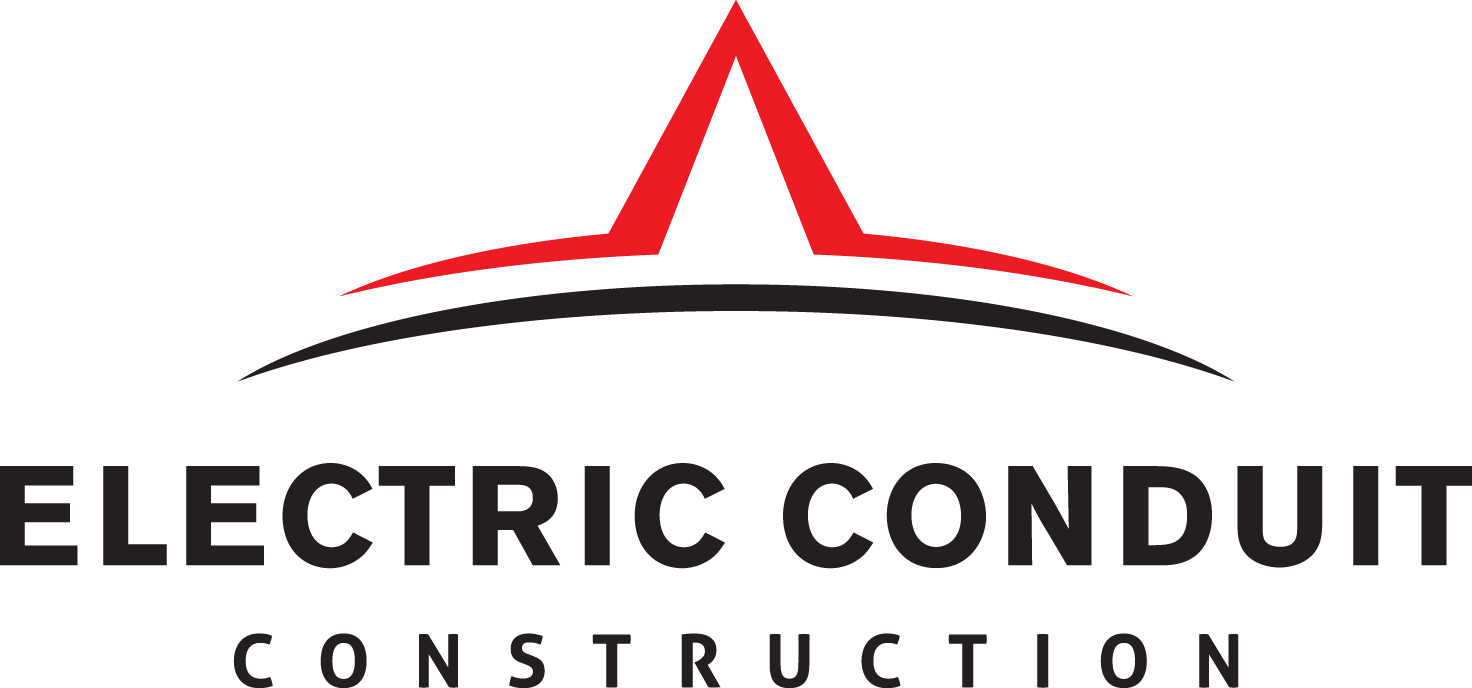Horizontal drill under RR and 60" water main with 6 innerducts completes a 14 mile communication project
Directional Drill With Challenges
INTRODUCTION
This case study describes a two-phase HDD totaling 2,400 feet that took place over a year. The drill spanned seasonal weather fluctuations and was guided under a 54-inch water main in a 60-inch casing, railroad bridge abutments and avoided parallel high-pressure pipelines. Successful completion of this bore finishes a fourteen-mile fiberoptic data/communication project.
DESCRIPTION
Construction projects come to life at mobilization when mats are laid down. Materials are offloaded at the yard and heavy equipment is moved in and work begins. All of this is happening at the start of 2025 as Electric Conduit Construction begins to drill 1,435’ in an extremely crowded utility corridor. Before describing this horizontal directional drill (HDD) case study it is worth noting what planning occurred prior to mobilization.
For that it is necessary to go back one year to when the first phase of the project was executed. This involved drilling 294’ and pulling back six 1.5” communication ducts. During this phase, the planning started for the 1,435’ bore.
The line of lay was parallel to a major four lane highway to the west. To the east lay four high-pressure pipelines transporting distillates and gas. Crossing the line of lay were utilities consisting of fiber optic cables, a four-track railroad line with buried bridge abutments, a 56” buried water main and an overpass. These obstacles were reflected in the proposed drill plan which caused the depth of the drill to vary from 8’ to as much as 40’ over the length of the drill path.
Rotational pressure, pullback pressure, depth
PROJECT NOTES
- Drill 294’ with 6 – 1.5” ducts
- Drill 1,435’ with 1- 8” HDPE duct
- Open-cut 200’ for tie-in
- Fuse 8” HDPE
- Pull 6 - 1.5” ducts through the 8” duct.
- Set 4 – hand holes and four inspection windows.
- Pull back 6 – 864 count fiber optic cables.
- 11,574 ft. of 684 count fiber optic cable
THE PROJECT
- 12/30/24 Jobsite safety plan final review
- 1/2/25 Mobilization, mat placement, mud plant, frac tanks, water tanks, hydro-excavation truck, track-hoe, drill rig on site and set up.
- 1/3/25 Final review of drill plan, drill profile, pull and rotational pressure tolerances.
- 1/6/25 Kickoff JSA, RR flaggers, layout 8” HDPE for fusing, Fuse two strings 800’ and 635’
- 1/6/25 Drill 300’ filter O-ring failure, and possible contaminated soil encountered. Samples taken.
- 1/13/25 Hydraulics repaired; soil analysis returned clear.
- 1/13/25 Pilot bore continues.
- 1/14/25 Pilot bore continues.
- 1/15/25 Drill exits at 15:19
- 1/16/25 14” ream begins with tail rods attached.
- 1/1725 14” ream complete
- 1/18/25 14” reamer attached with 8” HDPE pipe – pull back begins. One hold for fusing
- 1/18/25 Pullback complete 16:20
- 1/19/25 Clean up.
- 1/27/25 Blow mule tape from south to north. Attach mule tape to an Arnco wheel. Pull the winch line from South to north. Layout six 1.5” conduits and connect to pull heads. Connect the winch line to pull head. Use tugger to pullback six 1.5” conduits. Tie in 294’ section to 1,435’ section.
- 2/3/25 Blow 864 count fiber through each conduit
- 2/4/25 Clean up, remove mats, demobilize
Click on any image to start slide show
SUMMARY
Electric Conduit Construction (ECC) has two decades of experience with Horizontal Directional Drilling. ECC places underground infrastructure in the form of conduit, power cables, and fiber optic cables at the rate of 350,000 feet/year (62 miles/year). ECC achieves this with a utility strike rate of less than one percent. This phenomenal achievement is made possible with a rigorous training program, a comprehensive damage prevention program and the experience of our drillers, and locators.
ECC is ready to serve your needs for directional drilling. For more information click on “Request a Project” and one of our PM’s will contact you for further discussion.


























